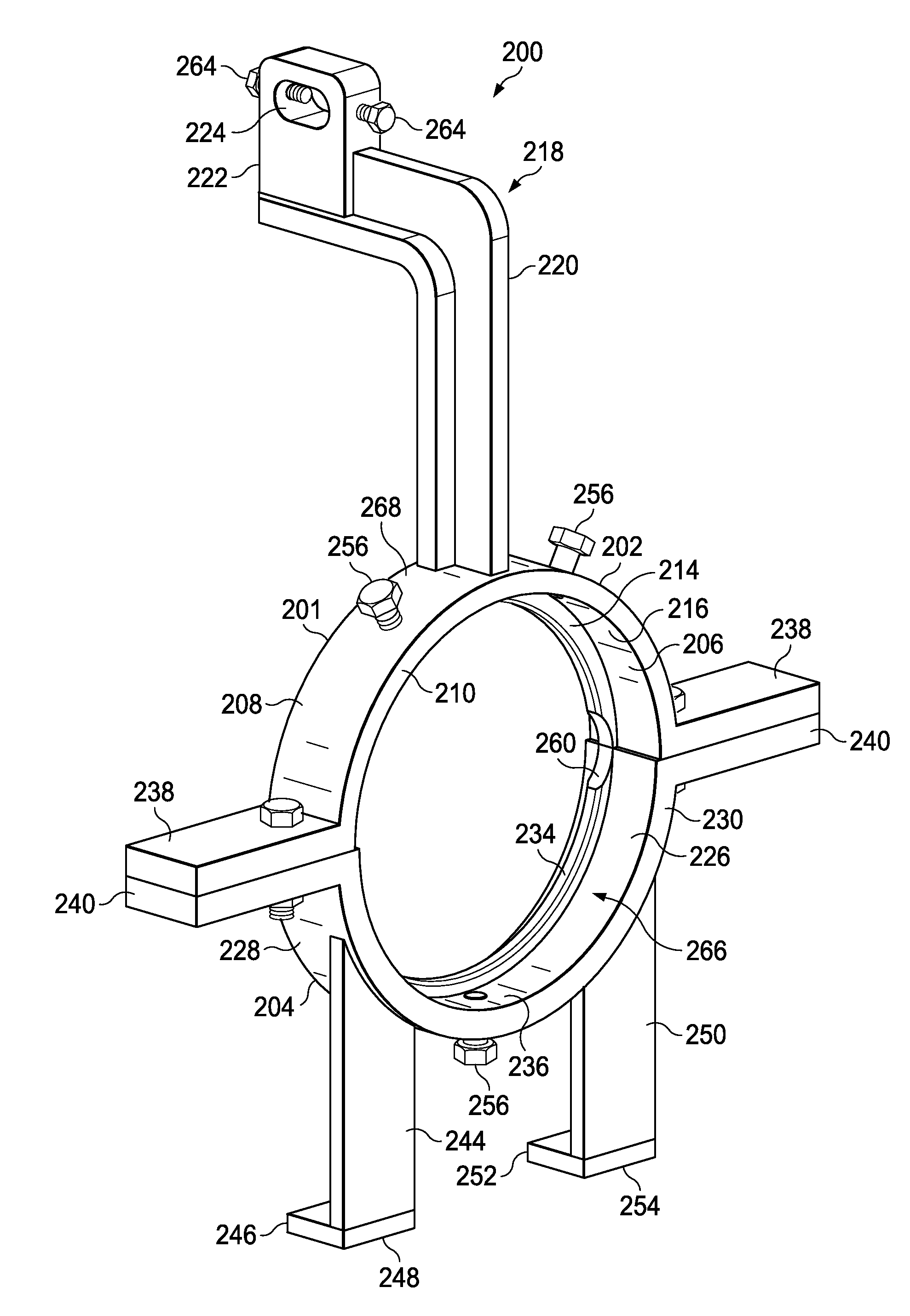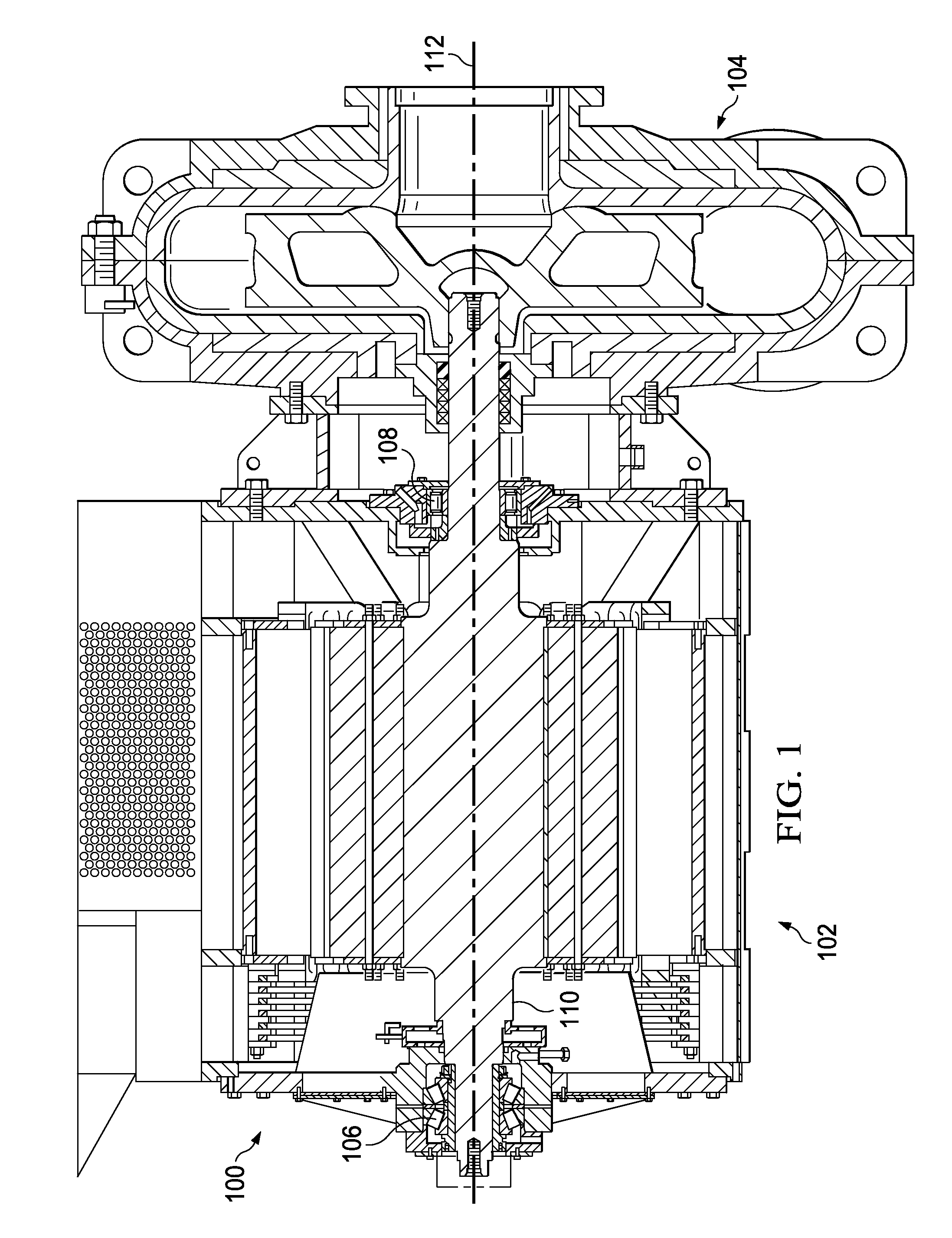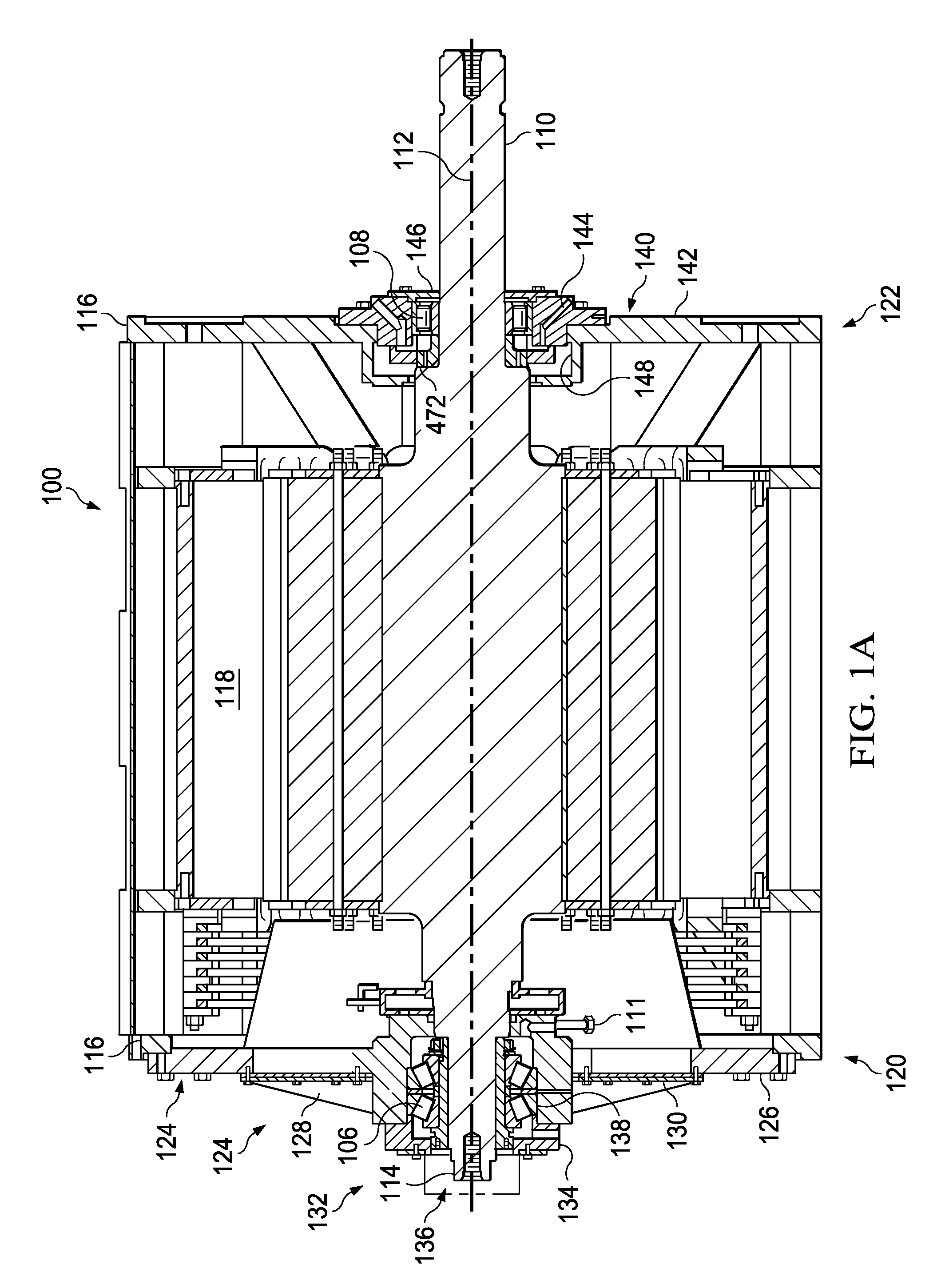Systems, apparatuses and methods for lifting, positioning and removing a bearing assembly from a shaft
a technology of bearing assembly and positioning device, which is applied in the direction of bearing repair/replacement, bearing rigid support, manufacturing tools, etc., can solve the problems of difficult replacement or service of bearings, affecting the service life or the frequency of maintenance of bearings, and affecting the service life of bearings. the effect of bearing assembly removal and convenient removal of bearing assembly
- Summary
- Abstract
- Description
- Claims
- Application Information
AI Technical Summary
Benefits of technology
Problems solved by technology
Method used
Image
Examples
Embodiment Construction
[0081]Referring to FIG. 1, an embodiment of a close-coupled pump 100 employing a power end 102, a fluid end 104 and a rotor shaft 110 extending between the power end 102 and the fluid end 104 is illustrated. The power end 102 has a first bearing assembly 106, oftentimes referred to as a dry end bearing assembly, and a second bearing assembly 108, oftentimes referred to as a wet end bearing assembly. Each of the bearing assemblies can also be referred to as sub-assemblies. The dry end bearing assembly 106 and the wet end bearing assembly 108 are both mounted on the rotor shaft 110, which rotates about a longitudinal axis 112. The close-coupled pump 100 is an illustrative, non-limiting example of how one or more bearing assemblies may be utilized and is not meant to infer a specific number or type of bearing assembly. While one skilled in the art will appreciate that bearings may be utilized in a number of different applications, the close-coupled pump 100 will be used as a backdrop f...
PUM
| Property | Measurement | Unit |
|---|---|---|
| thickness | aaaaa | aaaaa |
| length | aaaaa | aaaaa |
| angle | aaaaa | aaaaa |
Abstract
Description
Claims
Application Information
 Login to View More
Login to View More - R&D
- Intellectual Property
- Life Sciences
- Materials
- Tech Scout
- Unparalleled Data Quality
- Higher Quality Content
- 60% Fewer Hallucinations
Browse by: Latest US Patents, China's latest patents, Technical Efficacy Thesaurus, Application Domain, Technology Topic, Popular Technical Reports.
© 2025 PatSnap. All rights reserved.Legal|Privacy policy|Modern Slavery Act Transparency Statement|Sitemap|About US| Contact US: help@patsnap.com



